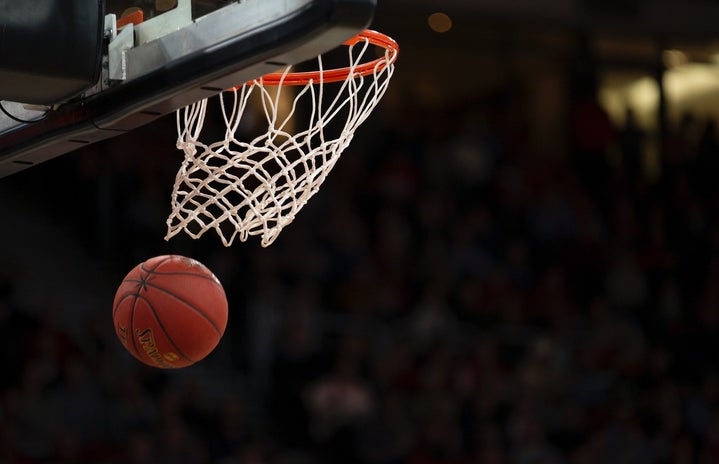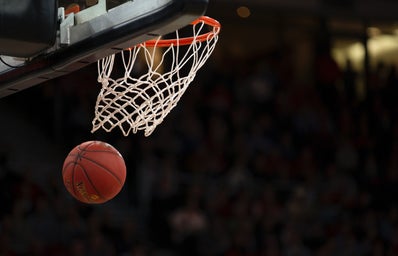The intersection between sports and society is ever changing. Over time, many ideologies of how involved sports should be in societal change have evolved. Some of these include Title IX, NIL, the importance of athletes’ mental and physical health, leagues’ willingness to support social change and the rise and recognition of women’s sports. These aspects of sports have evolved significantly over the years. One aspect of sports and society that has particularly evolved over the years has been our acceptance, appreciation and passion for women’s sports and nowhere has this dynamic been more apparent than in women’s college basketball. From barely being considered an organized sport to now getting more attention than ever, women’s college basketball has taken off and paved the way for other women’s sports.
For most of recent history, women’s sports have been discounted compared to their male counterparts. Surprisingly, women’s basketball was first played only a year after men’s basketball at Smith College in Massachusetts. However, the sport started out as a leisurely game that appropriately reflected the societal norms of the time. Though men’s and women’s college basketball teams were far from equal in society’s eyes in the beginning, women’s basketball became the first ever women’s team sport. Basketball as an organized women’s sport was made possible due to the help of one of the most influential figures in women’s basketball, Sandra Berenson. In 1899, Berenson was a director at Smith College, and on the side, she taught the ins and outs of basketball to her students. By doing so, Berenson highly went against the Victorian era norms that said women belonged in the home. Though there was societal pressure for Berenson to teach the same rules of men’s basketball, she decided to teach modified rules to her students. With her rules, there were nine women on a team and three were assigned to each position: center, guard and forward. Berenson’s principal motive was to give women the opportunity to live just as healthy of a life as men did through the art of basketball.
Moving into the 20th century, women’s basketball continued to expand. Society slowly opened its mind to the idea that women’s basketball could be just as competitive and entertaining as men’s. In 1972, genuine change was made. The Title IX law was passed this year and required that no one could be discriminated against in federally funded places of education based on their sex. At the start of 1972, very few girls and women were playing sports in school and athletic scholarships for women were virtually unheard of. Each year after 1972, the number of girls and women in sports continued to multiply. Not only did this law drastically increase the level of women’s participation in collegiate sports, but it also increased the education and employment levels in the U.S. by encouraging women to become more involved. This major institutional change held schools and universities accountable in terms of equal treatment of men and women in college athletics, and this is exactly what the U.S. needed. Title IX mandated that women be respected and held to the same standard that men are.
After Title IX, the world of sports for women opened immensely. In 1996, the WNBA was formed as the female counterpart to the NBA. Similarly, the skill level, competitiveness, and popularity of women’s college basketball exploded to the extent that it is now arguably as exciting, if not more so, than the men’s game. The expansion of broadcast media outlets highlighting the women’s game aided this process by putting these women’s talent on the big screen. The greater visibility of the women’s game, along with the popularity of several women’s basketball stars—Caitlin Clark, Angel Reese, and Liz Kitley, to name a few—helped female athletes bring in sponsorship and endorsement deals and introduced NIL—which stands for Name, Image and Likeness—opportunities for women as well as for the men. Women’s college basketball is arguably now respected just as much as its male counterparts.
This long journey would not have been made possible without the help of many notable women pioneers. From Sandra Berneson and the first women to ever play basketball, to the star coaches and players of the 21st century, it took a village to get to this point. Players like Caitlin Clark, Georgia Amoore and Hannah Hidalgo, among others, have inspired the world. The sport of women’s basketball is growing quicker than ever. This year, the demand for women’s college basketball is higher than ever before. Tickets for the women’s NCAA Final Four are nearly $100 more expensive than the men’s. These achievements would have looked virtually impossible to Sandra Berenson. Indeed, these achievements would have been hard to believe even five or ten years ago.
The growth of women’s college basketball is undeniable. The sport is finally getting respect that is long overdue. Just like thousands of little girls have supported men’s college basketball for decades and looked up to its star players, little boys are now lining up to get autographs from players like Caitlin Clark and Cameron Brink. We are watching major change happen before our eyes and it’s unlikely to slow down or reverse course anytime soon.


